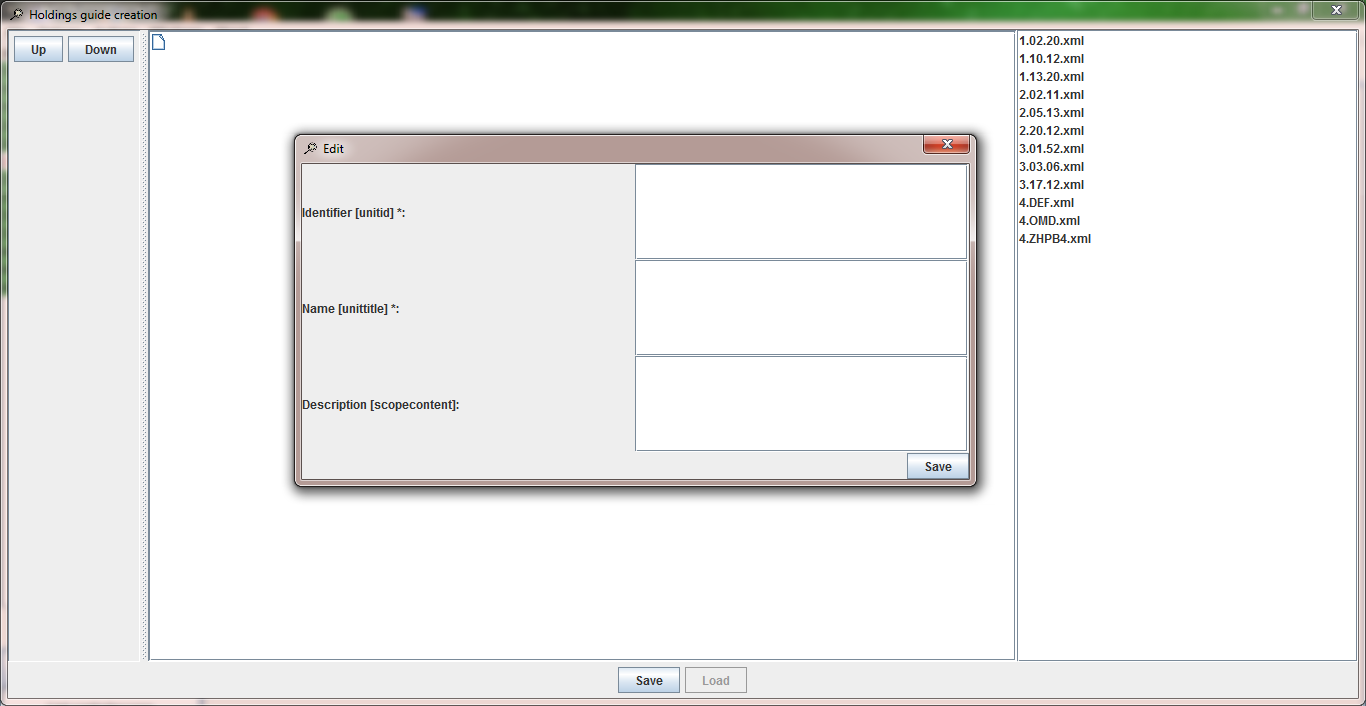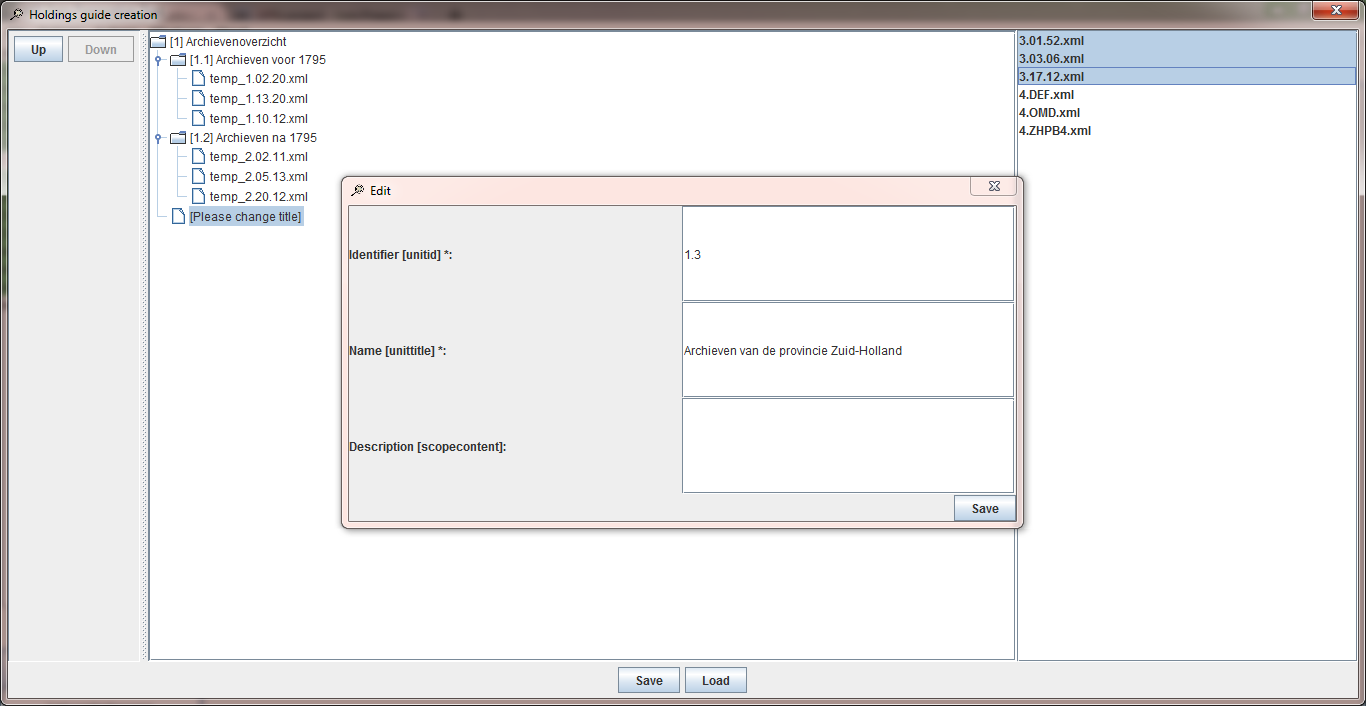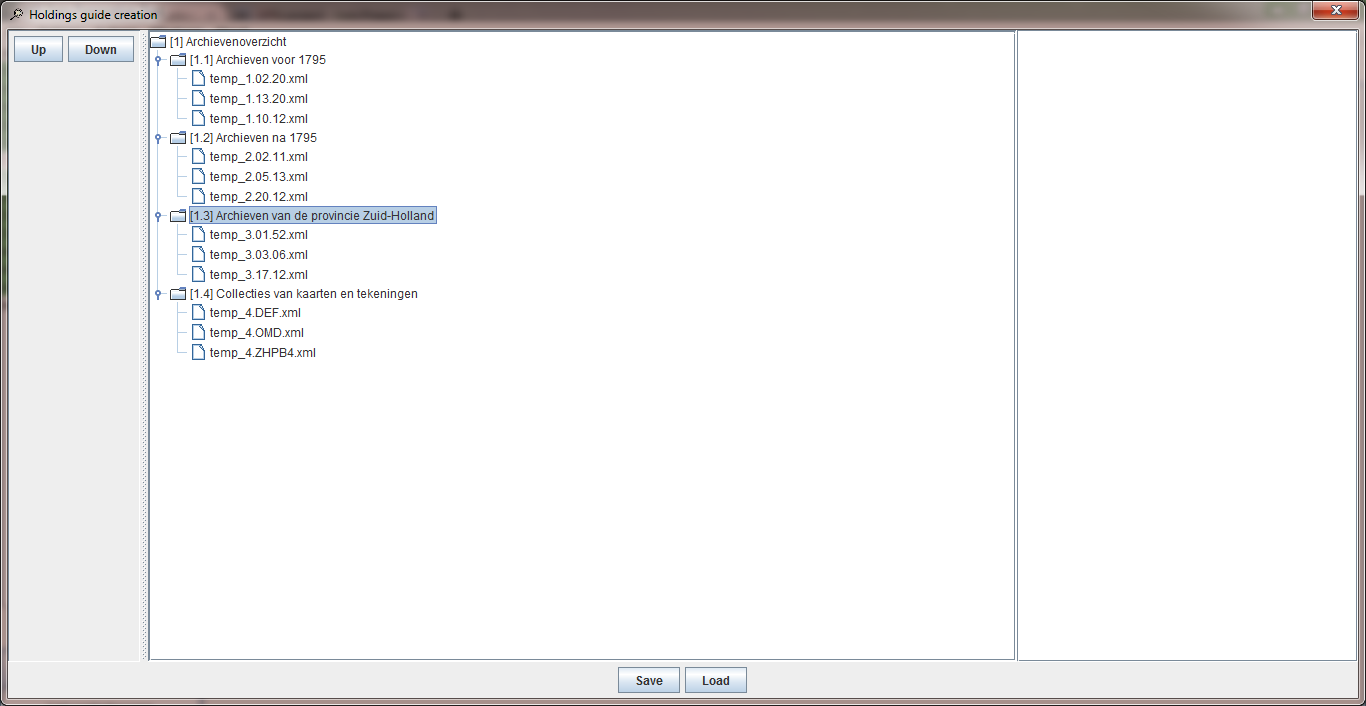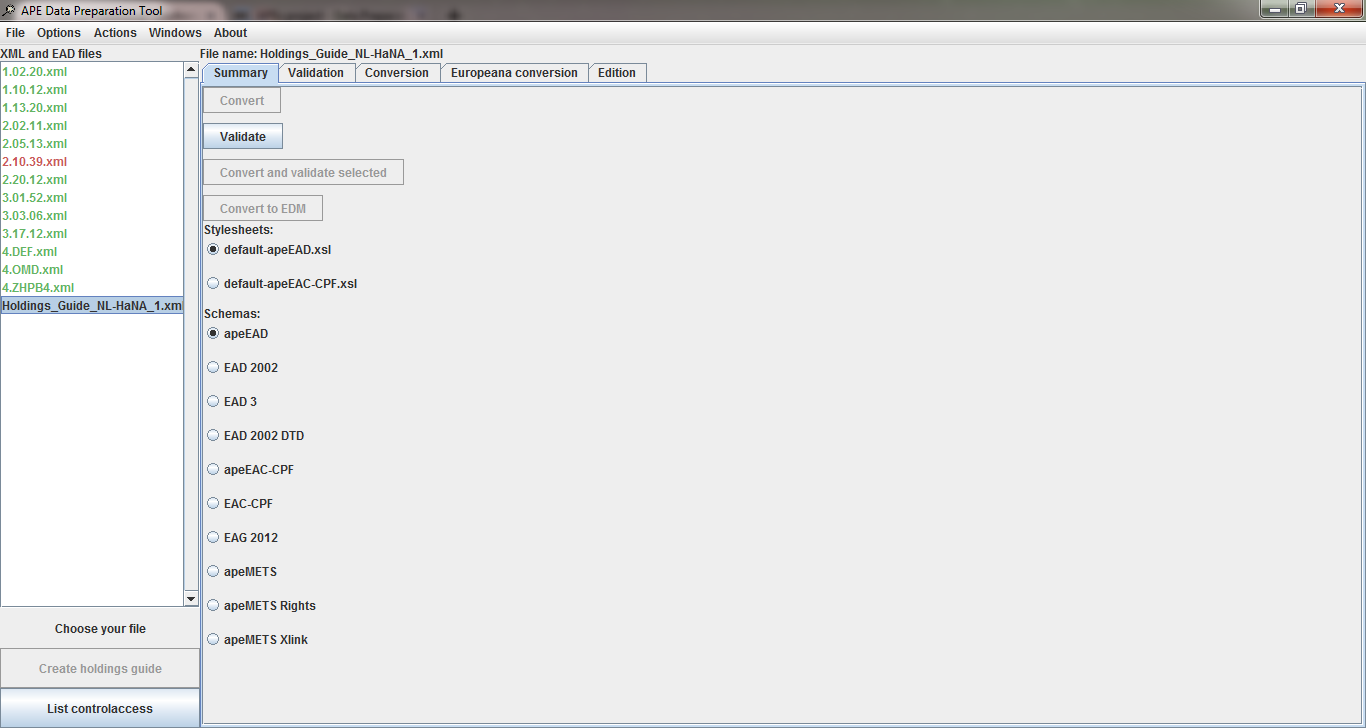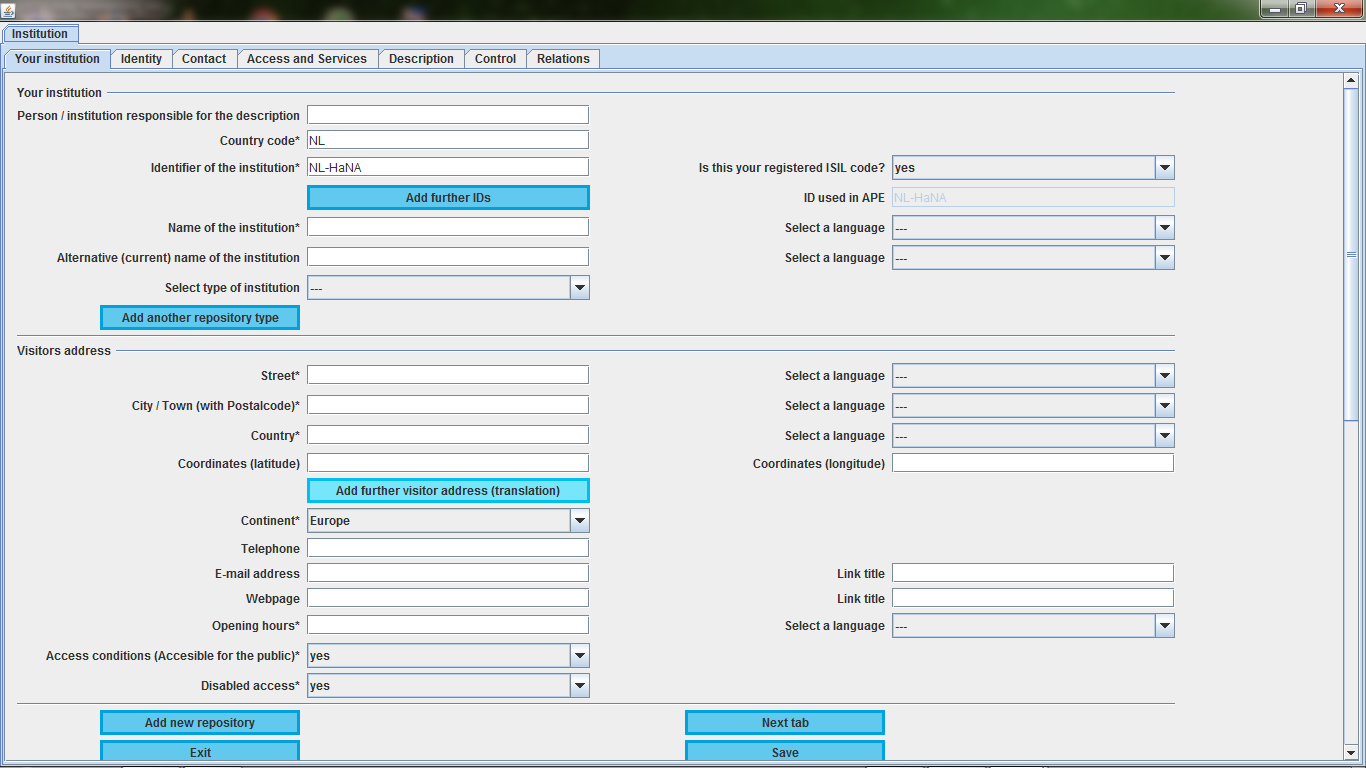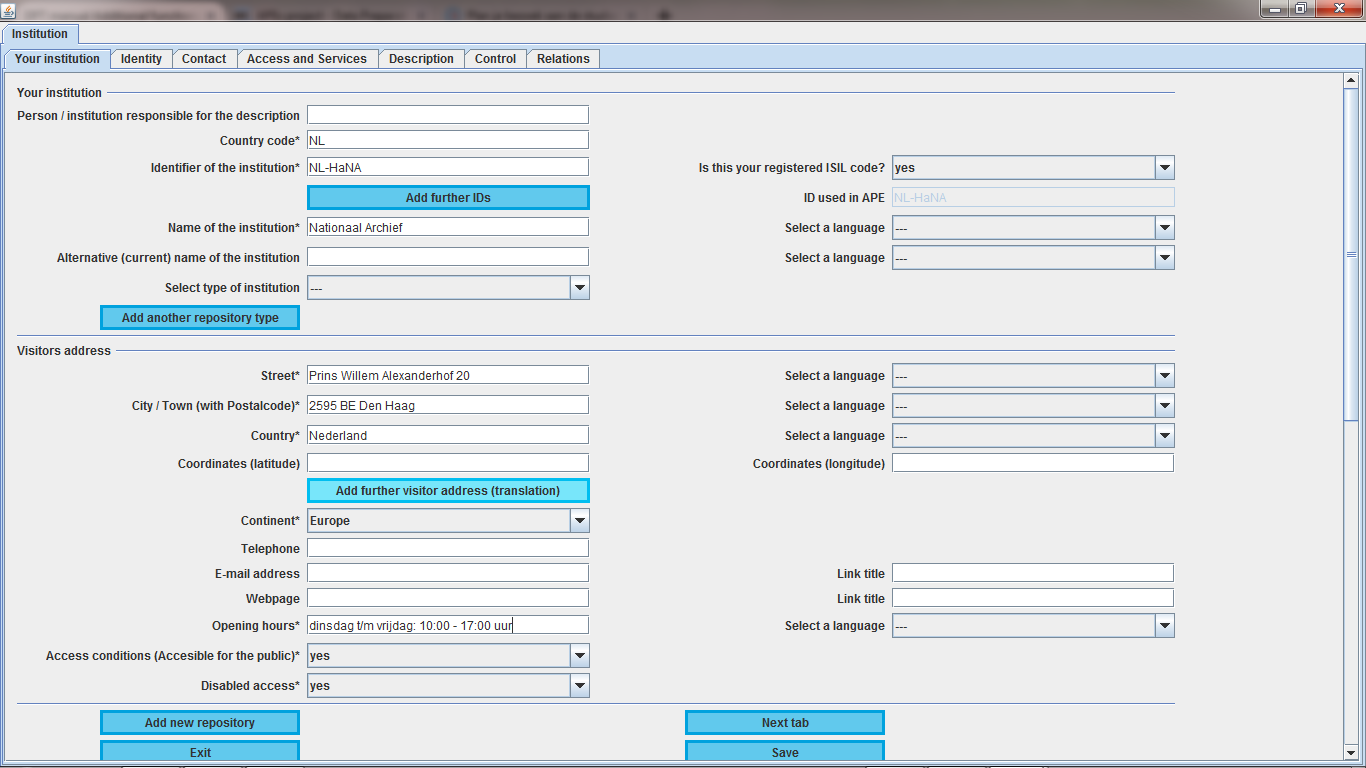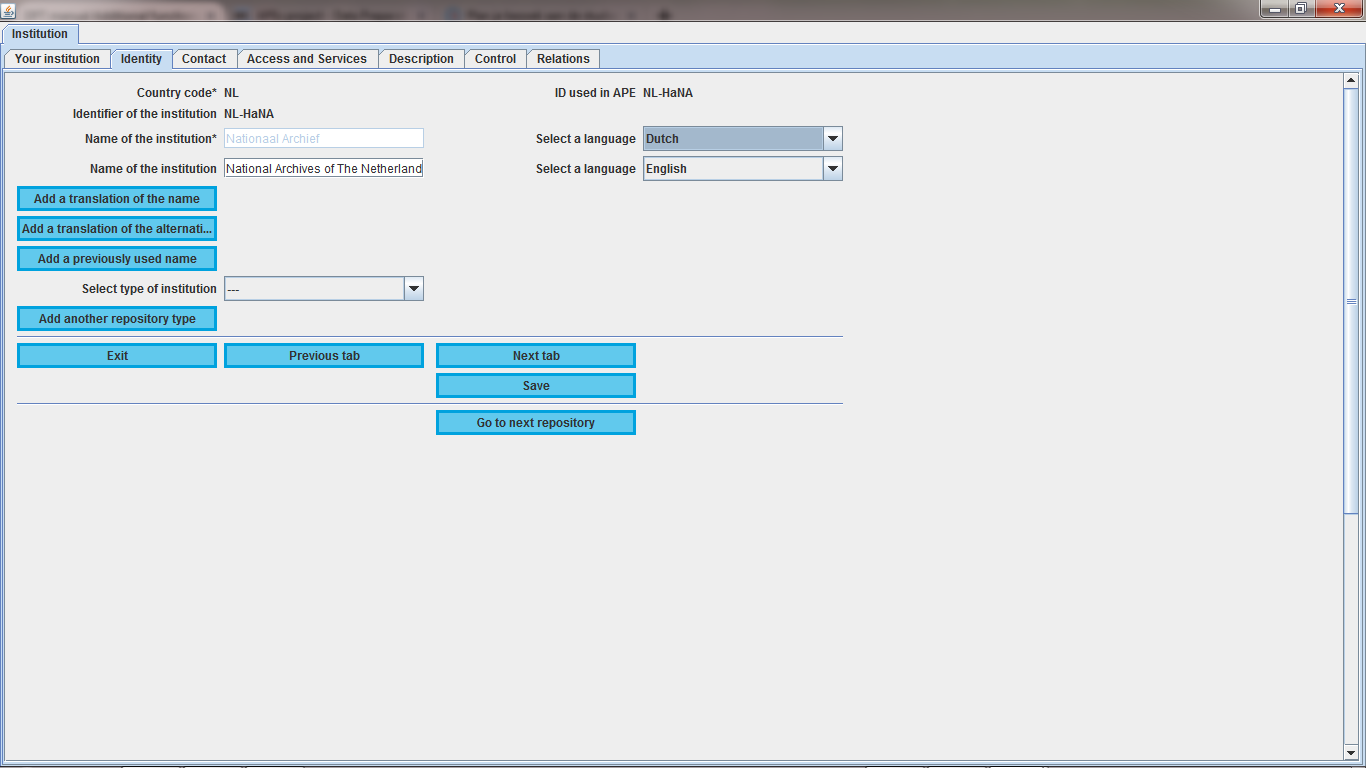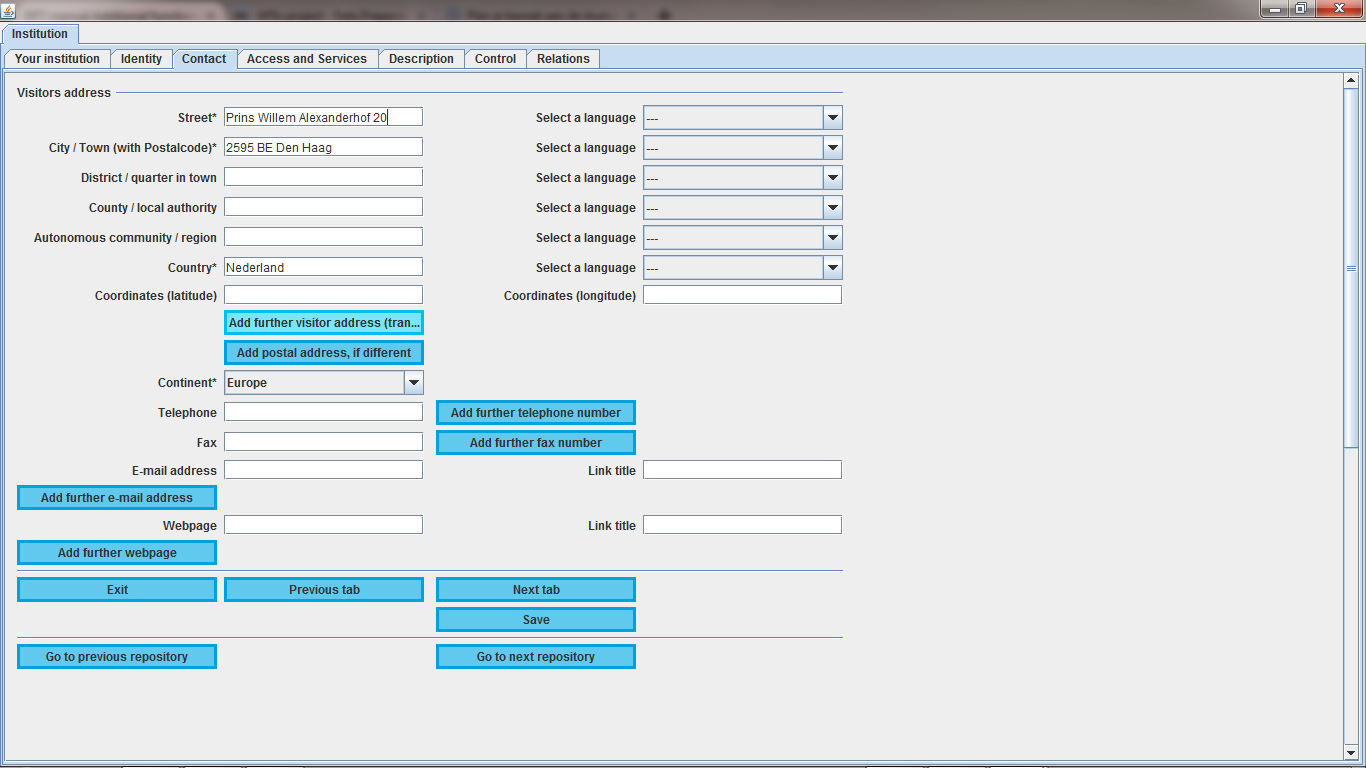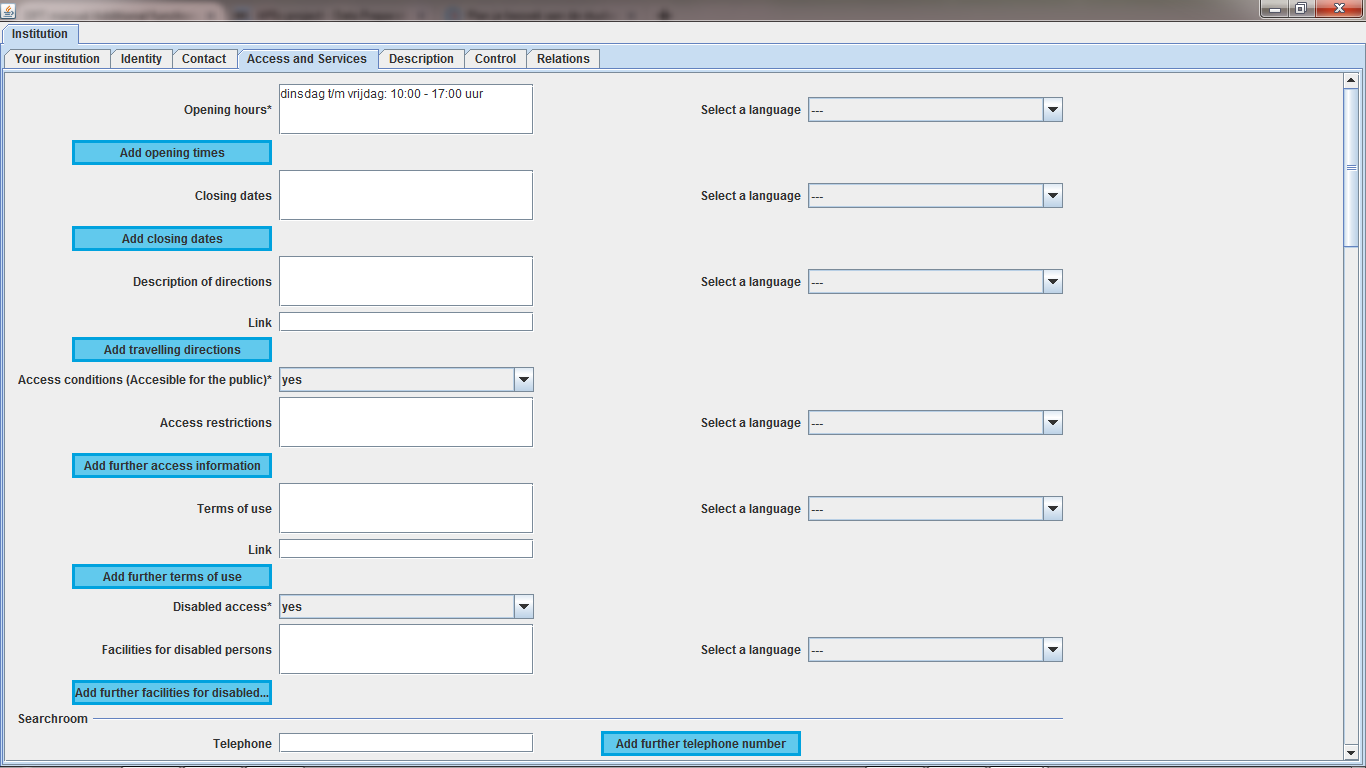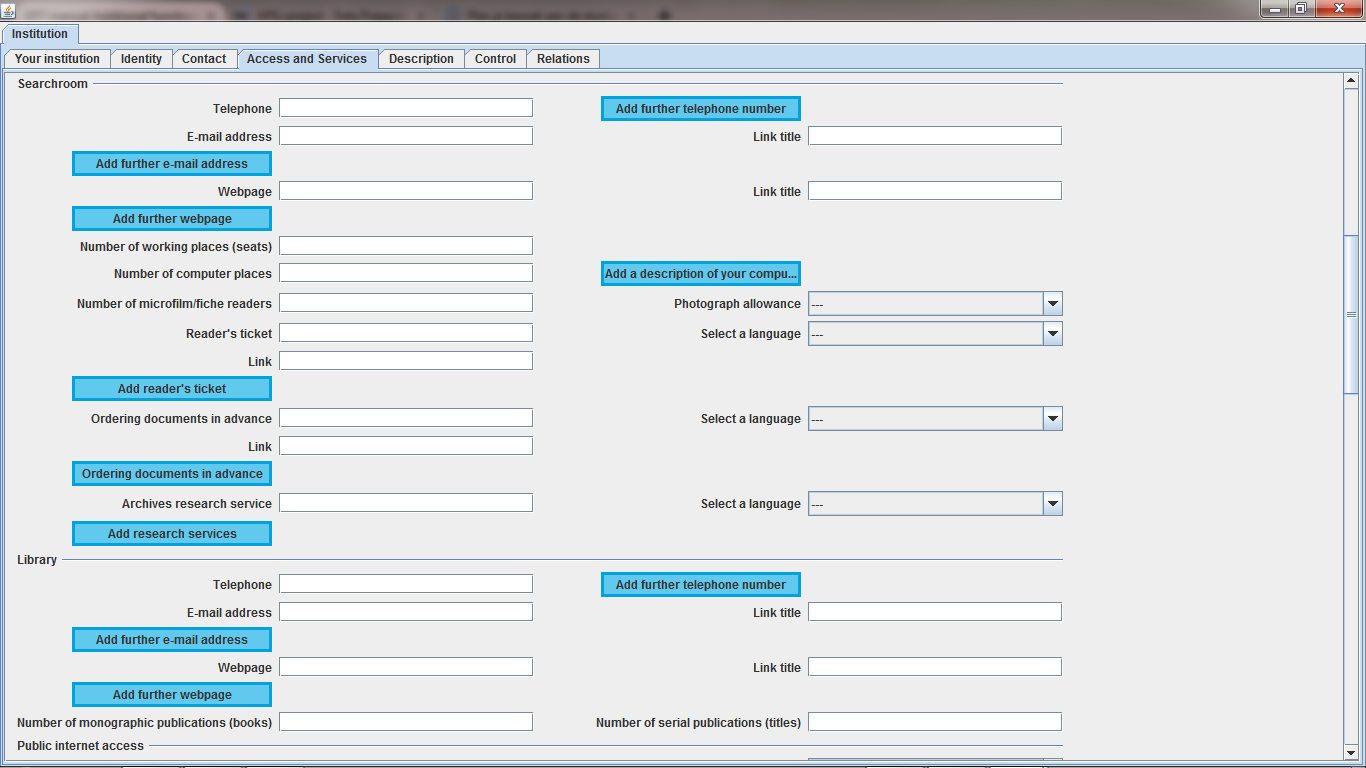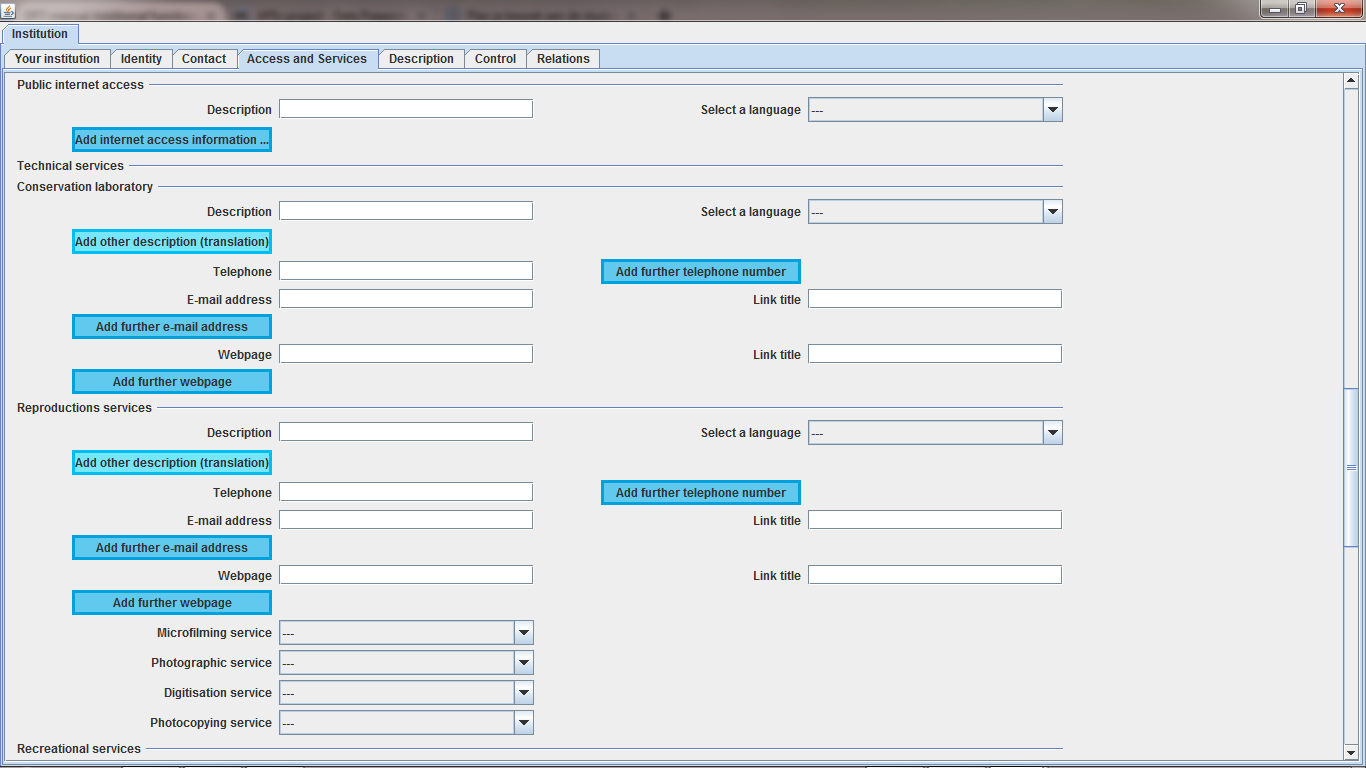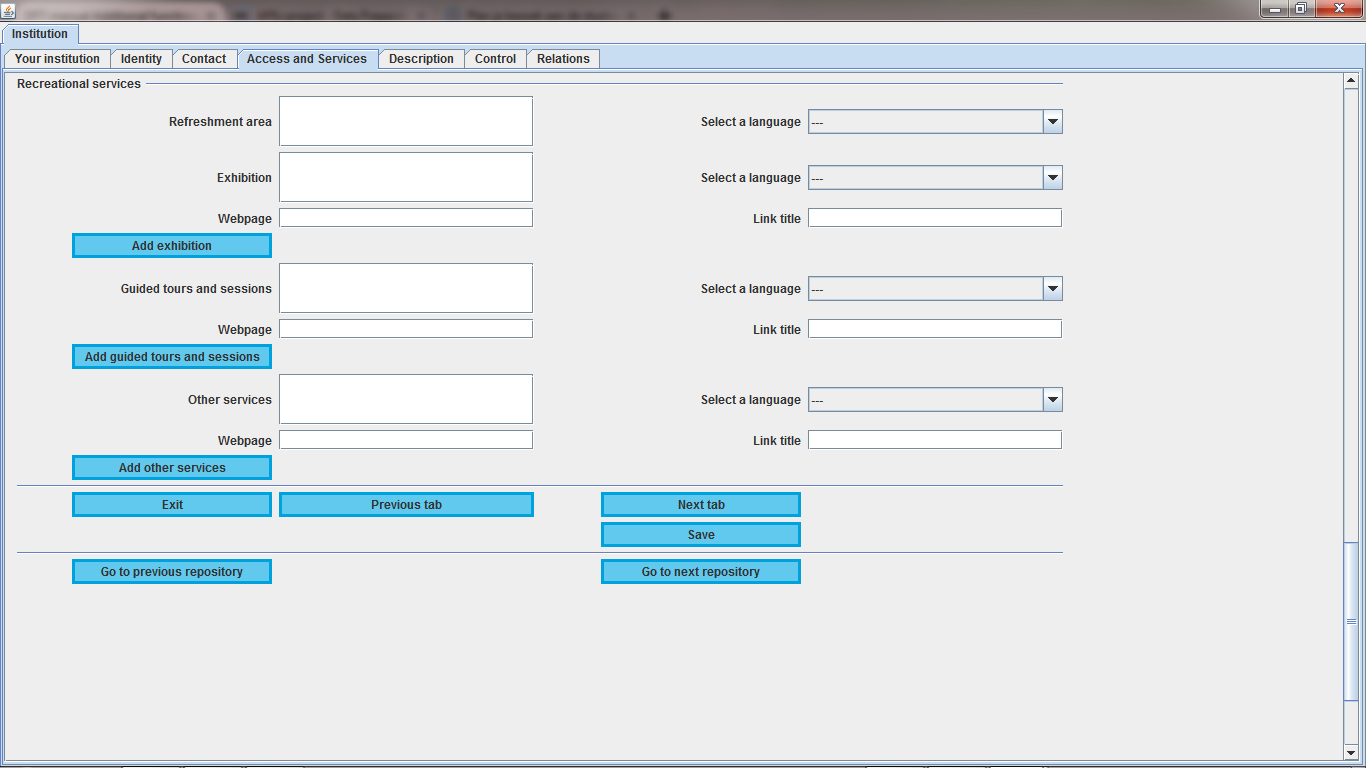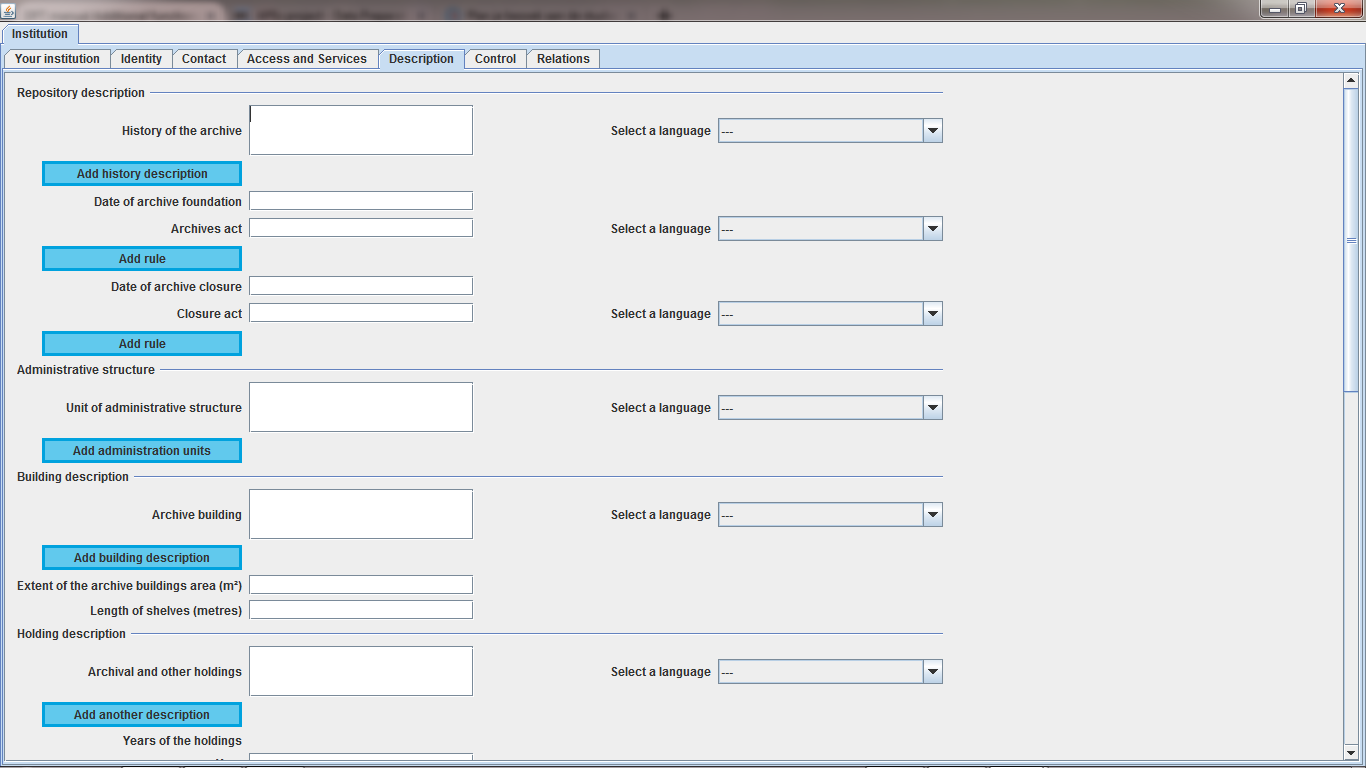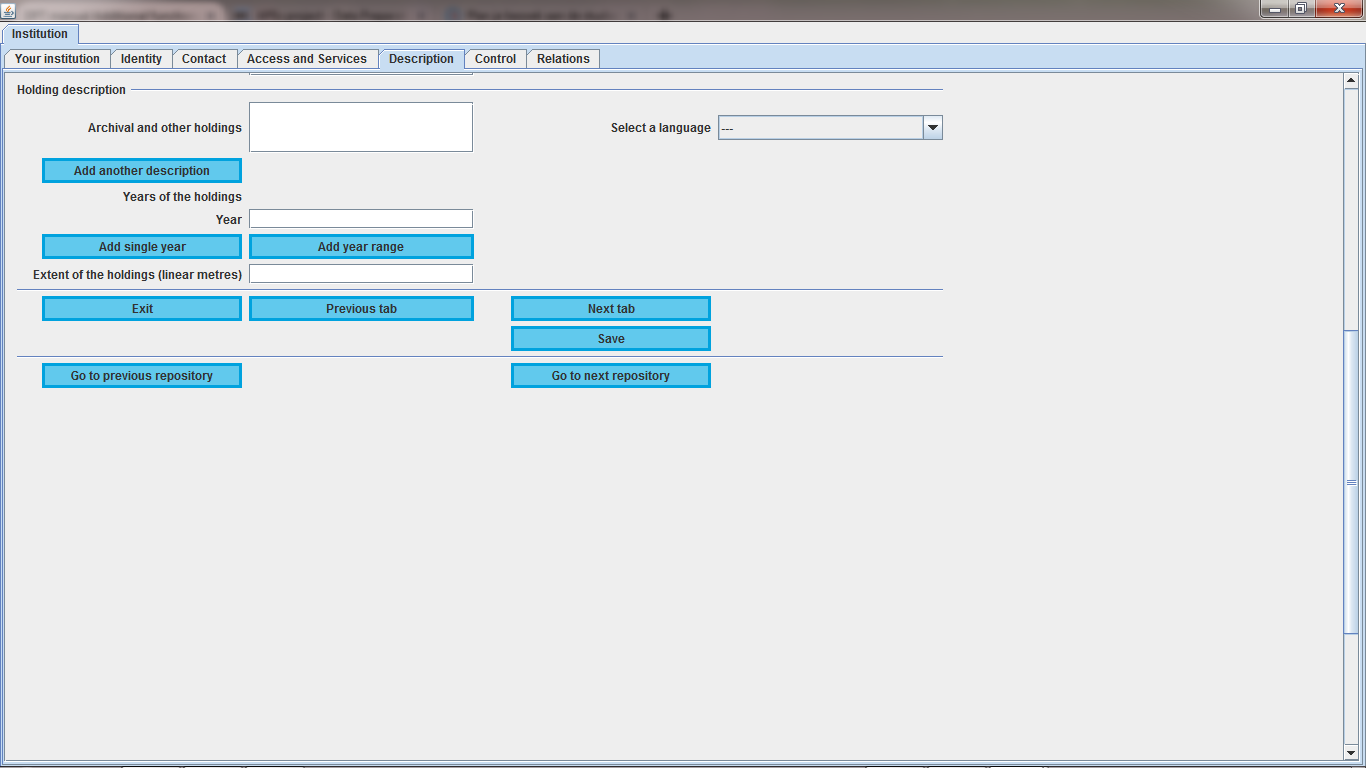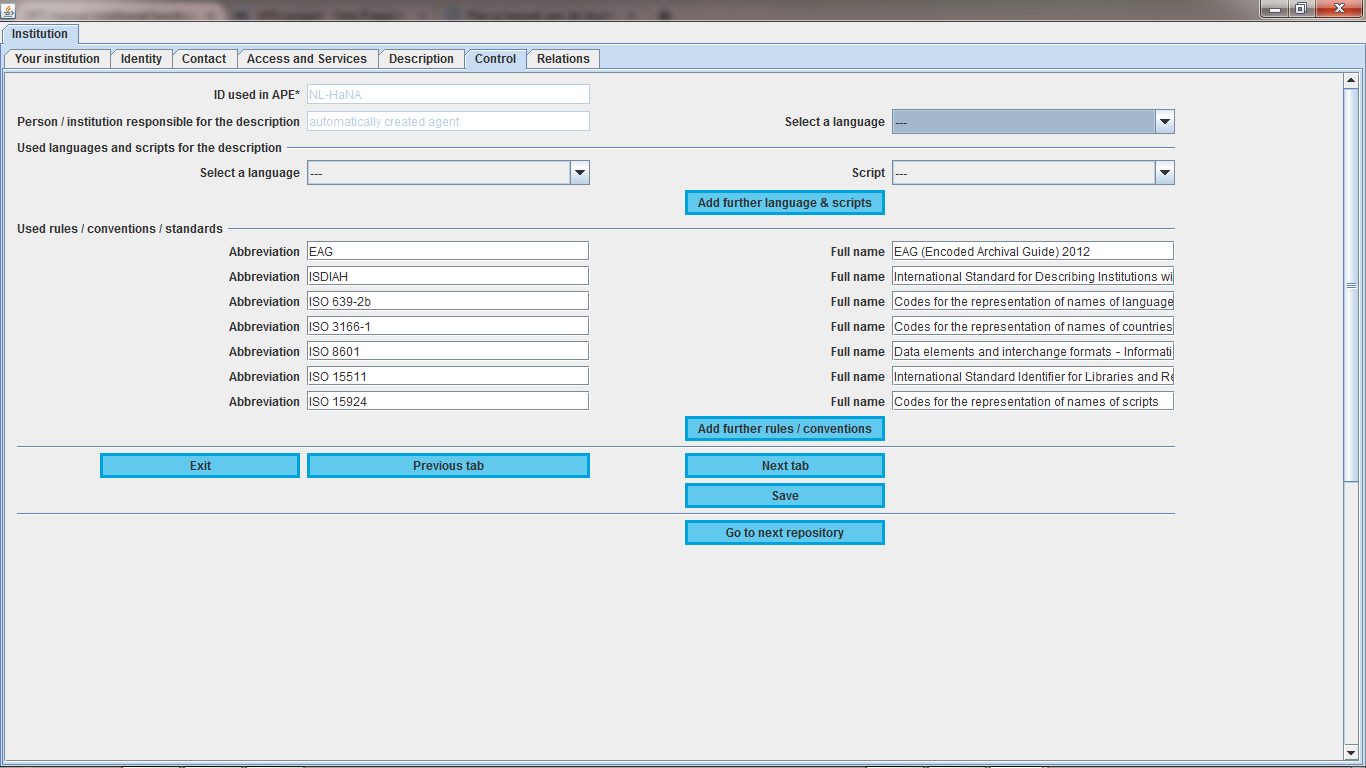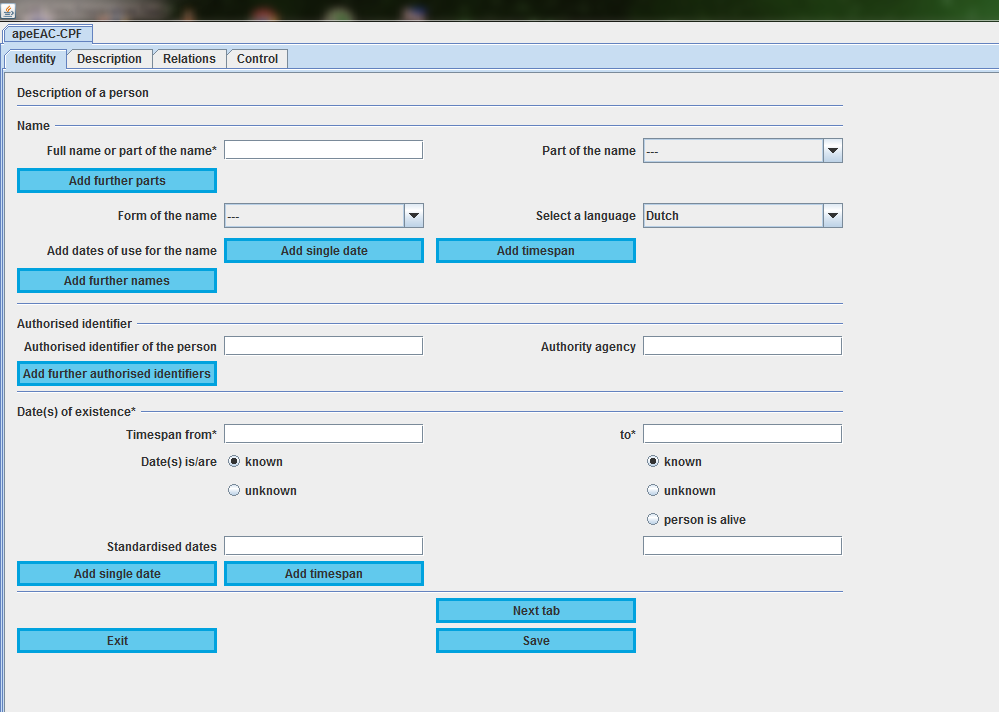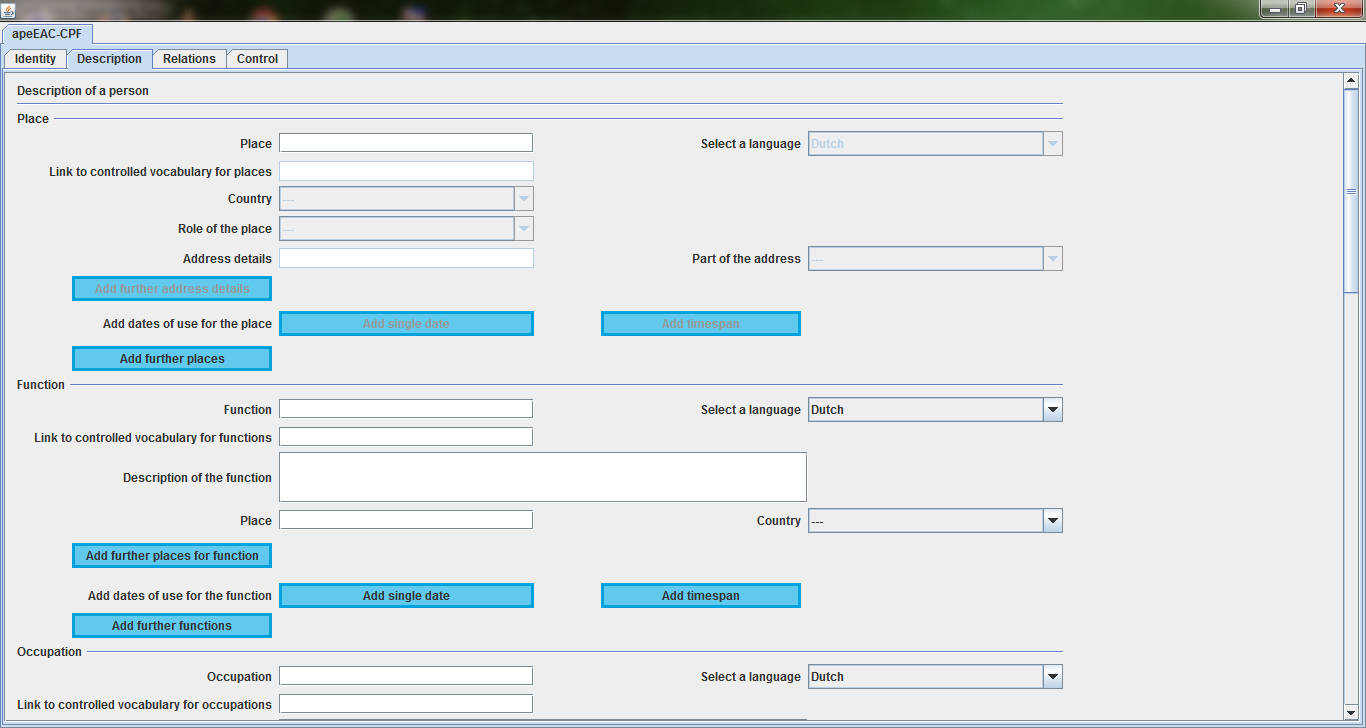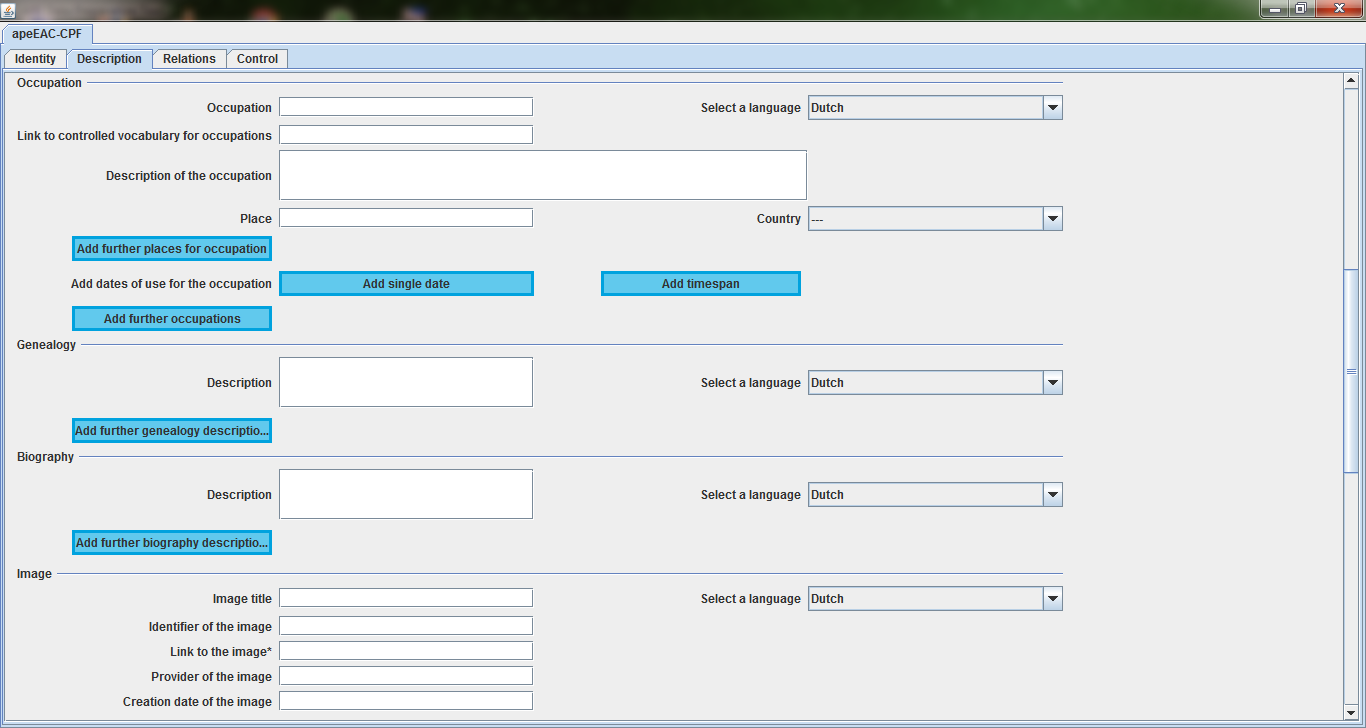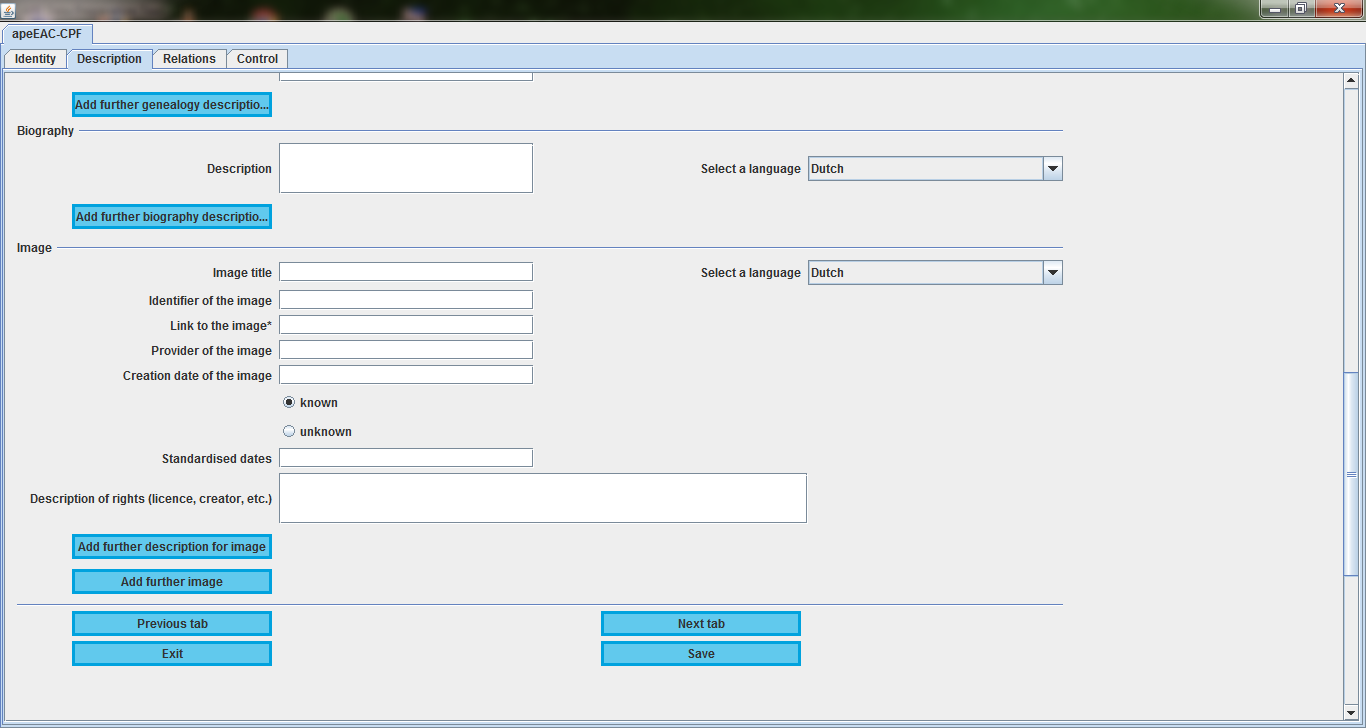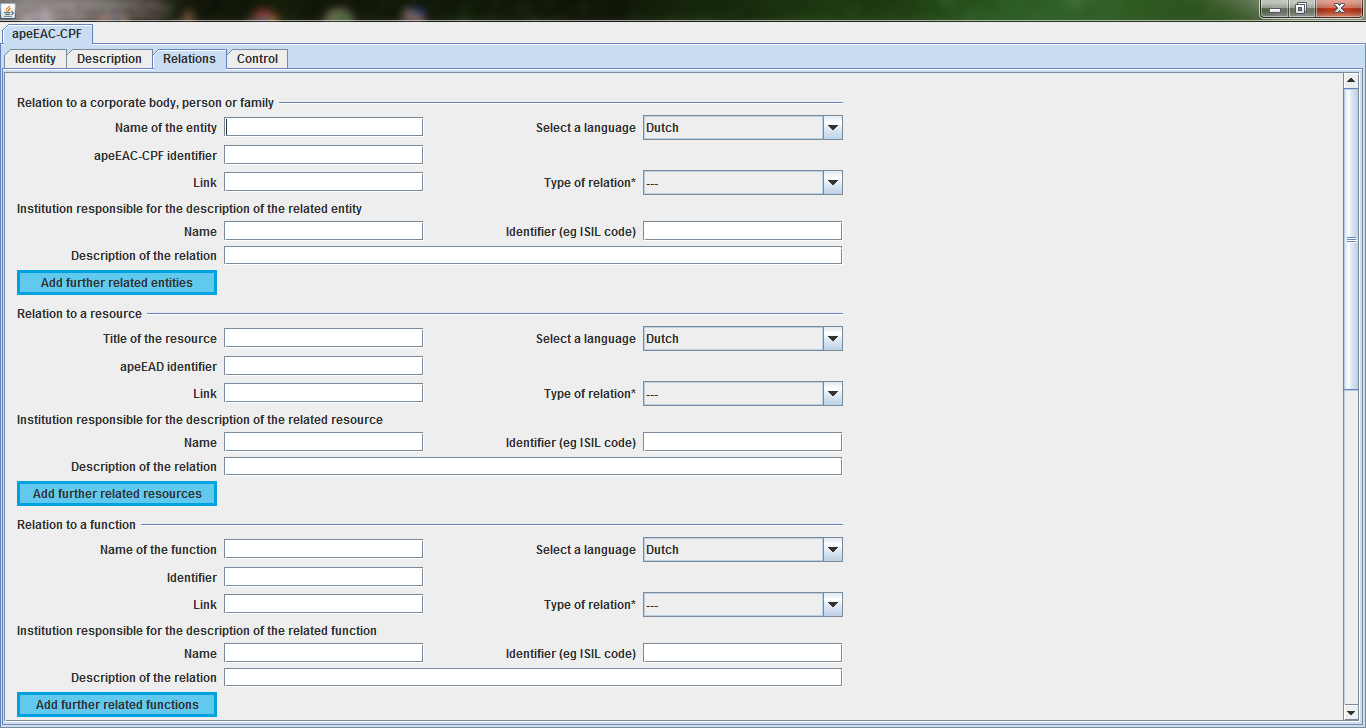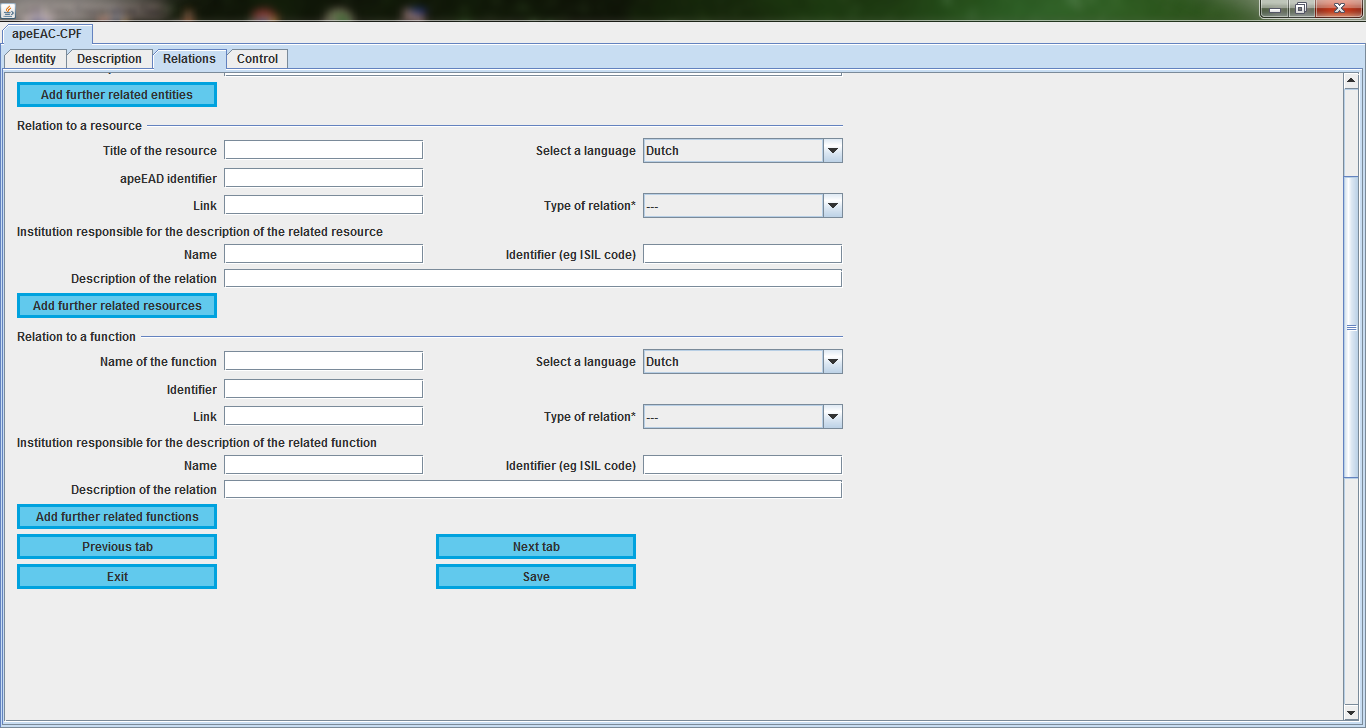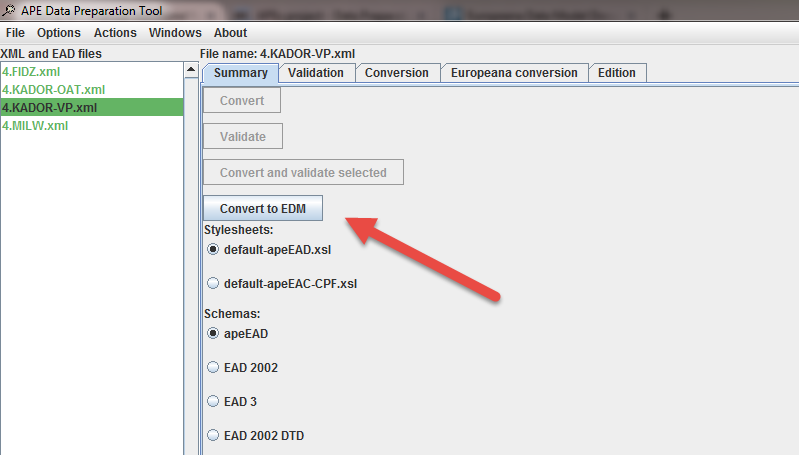Difference between revisions of "DPT manual Additional functionalities"
(→EDM conversion) |
(→the Your institution tab) |
||
| Line 57: | Line 57: | ||
=== the Your institution tab === | === the Your institution tab === | ||
| + | |||
| + | This tab holds the general information on your archival institution and contains mandatory fields, marked with an asterisk (*). Some information entered on this tab may serve as a basis for additional information in the other tabs and will be copied automatically in those other tabs. | ||
[[File:APE_DPT_manual_45.png|400px|thumb|left|APE DPT manual, figure 45: the Your institution tab of the EAG creation form]] | [[File:APE_DPT_manual_45.png|400px|thumb|left|APE DPT manual, figure 45: the Your institution tab of the EAG creation form]] | ||
| − | <br clear=all> | + | <br clear=all> |
| + | |||
| + | The first part of this tab asks for basic information on your institution: | ||
| + | |||
| + | * '''''Person/institution responsible for the description''''': this field is optional. In case this field is left empty, a standard value ("automatically created agent") will be used later on in the EAG-XML output, but will not be displayed. | ||
| + | |||
| + | * '''''Country code''''': this mandatory field is pre-filled with the two-letter country code which you provided when you started using the tool. | ||
| + | |||
| + | * '''''Identifier of the institution''''': this mandatory field is pre-filled with the identifier of your institutiion, which you provided when you started using the tool (or changed via the main menu option '''''Options'''''). In case this identifier is a registered ISIL code or a unique code within your country, answer the question '''''Is this your registered ISIL code?''''' with: '''''yes'''''. After uploding this file to the Archives Portal Europe, this identifier will then also be used there as the identifier of your institution. | ||
| + | |||
| + | ''Note: it's recommended to use a registered [http://biblstandard.dk/isil/ ISIL code] when existing. If your identifier is not a registered ISIL code or unique within your country, please specify '''''no''''' for the question '''''Is this your registered ISIL code?'''''. Your file will then get an extra value as identifier ([country code]-99999999999) for the time being. When uploading this file to the dashboard, this temporary value will be recognised as such and will be replaced automatically by a unique identifier within the Archives Portal Europe. If you have more than one identifier assigned to your institution, you can add further identifier fields by clicking the '''''Add further IDs''''' button.'' | ||
| + | |||
| + | * '''''Name of the institution''''': this field is mandatory and has to hold the authorised, full name of your institution. | ||
| + | |||
| + | * '''''Parallel name of the institution''''': this field is optional. If there is another name for your institution which can be used in parallel to the actual name, you can add it here. As for the previous field, the language box is optionally filled with the language of the given parallel name. | ||
=== the Identity tab === | === the Identity tab === | ||
Revision as of 07:57, 3 August 2018
The tool contains - just like the Archives Portal Europe's Dashboard - functionality which is not really necessary for the basic workflow of uploading, processing and publishing finding aids, but which offers additional value, for individual institutions as well as for the portal.
Contents
Holdings guide creation form
The button Create holdings guide in the Summary tab becomes available once at least one valid apeEAD file has been selected. Clicking on the button opens a new window containing the file(s) selected to be integrated in the Holdings guide (it’s preferable to save your finding aids before beginning).
The holdings guide creation screen is divided in three parts:
- on the right you see the list of the finding aids you have selected to be connected to the holdings guide,
- in the middle you will see the tree structure of the holdings guide appear once you start building it
- on the left you have access to ordering buttons (Up/Down).
An extra dialogue screen (Edit) with some input boxes via which you can start building the structure of the holdings guide is shown on top of this screen.
First you have to provide in the Edit window some information to describe your holdings guide: Identifier (<unitid>), Name (<unittitle>) and Description (<scopecontent>). Only the Identifier and the Name are mandatory. Once you have created this 'root' part of the holdings guide, you can use the same functionality to expand this any further to a structured hierarchical tree. You just have to provide the same information (Identifier and Name) for the lower levels, that is: if you do create lower levels, because you can also stick to just one main level.
- you can create as many levels and sub-levels as needed to organise your holdings guide; the structure will be displayed in the middle part of the screen as a tree,
- once you have created your hierarchy, you simply drag and drop the files into the corresponding levels,
- if you need to re-arrange the hierarchy or the order of your files: the Up and Down buttons on the left enable you to move files or levels inside the same level from one place to another; to move an entire level to another level, you have to use the drag and drop facility,
- right-clicking on a level or a file enables you to add, edit or remove a level, or remove a file; in the last case, the file(s) will be available again in the right part of the screen for further use,
- once all finding aids have been inserted into the holdings guide structure, click on the Save button; the finding aids left in the right part will not be integrated,
- after saving the newly created holdings guide, you return to the Summary tab; the holdings guide is shown at the bottom of the list in the left and now you have to validate it,
- after validating it, save it before closing the tool, using the File and Save selected APE file(s) functionality.
The newly created holdings guide has the following characteristics: all information of each level (Identifier, Name and Description) are transformed into c-levels (unitid, unittitle and scopecontent) and all information of the file levels are retrieved from the files themselves (unitid, unittitle and scopecontent) but the <eadid> of each file becomes part of the otherfindaid/extref-element used in the holdings guide for linking to the finding aids.
Note that when saving the holdings guide, a serialised file is also saved for loading the file at a later stage if wanted. This serialised file is saved with a ".ser" file extension in the output folder of the tool. This ".ser" file can serve as a basis to further modify or complete the holdings guide, if it has not been overwritten or moved from the output folder. One can always save it and replace it in the output directory for further modification.
EAG creation form
The EAG2012 standard is based on the ISDIAH standard. Please see for more information the EAG2012 page of this wiki.
You can access the EAG creation form via the main menu option Actions and the submenu options EAG 2012 and Create a new EAG 2012 file.
The form has seven tabs. The first tab, Your institution, contains all mandatory elements required to create a valid EAG file. Numerous fields can be translated, therefore you have the possibility to select a language on the right of these fields.
You move from one tab to another by clicking on the Next tab/Previous tab buttons and you can save your file from any of the tabs by clicking on the Save button without going through all tabs. The Exit button closes the screen without saving the file.
Once you have created your EAG file, you have to validate and save it in order to upload it in the Archives Portal Europe's Dashboard.
the Your institution tab
This tab holds the general information on your archival institution and contains mandatory fields, marked with an asterisk (*). Some information entered on this tab may serve as a basis for additional information in the other tabs and will be copied automatically in those other tabs.
The first part of this tab asks for basic information on your institution:
- Person/institution responsible for the description: this field is optional. In case this field is left empty, a standard value ("automatically created agent") will be used later on in the EAG-XML output, but will not be displayed.
- Country code: this mandatory field is pre-filled with the two-letter country code which you provided when you started using the tool.
- Identifier of the institution: this mandatory field is pre-filled with the identifier of your institutiion, which you provided when you started using the tool (or changed via the main menu option Options). In case this identifier is a registered ISIL code or a unique code within your country, answer the question Is this your registered ISIL code? with: yes. After uploding this file to the Archives Portal Europe, this identifier will then also be used there as the identifier of your institution.
Note: it's recommended to use a registered ISIL code when existing. If your identifier is not a registered ISIL code or unique within your country, please specify no for the question Is this your registered ISIL code?. Your file will then get an extra value as identifier ([country code]-99999999999) for the time being. When uploading this file to the dashboard, this temporary value will be recognised as such and will be replaced automatically by a unique identifier within the Archives Portal Europe. If you have more than one identifier assigned to your institution, you can add further identifier fields by clicking the Add further IDs button.
- Name of the institution: this field is mandatory and has to hold the authorised, full name of your institution.
- Parallel name of the institution: this field is optional. If there is another name for your institution which can be used in parallel to the actual name, you can add it here. As for the previous field, the language box is optionally filled with the language of the given parallel name.
the Identity tab
the Contact tab
the Access and services tab
the Description tab
Control tab
Relations tab
EAC-CPF creation form
EDM conversion
